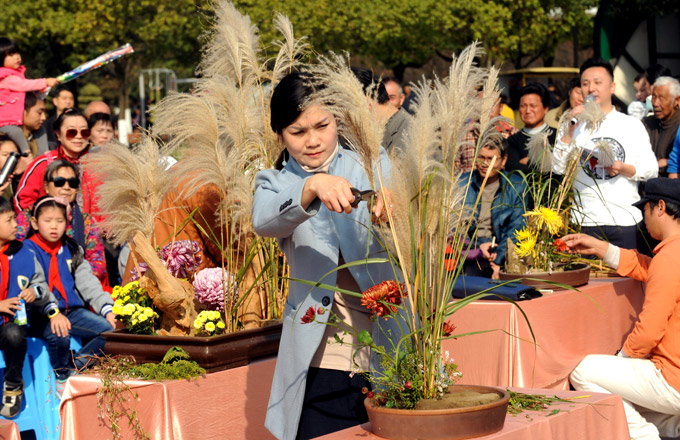

|
Local farmers plant willow trees in the desert in the Inner Mongolia autonomous region. Zhang Qi |
A Shanxi entrepreneur is trying to turn a profit and green Inner Mongolia at the same time.
Li Jinglu is paying 5,000 local herders across the autonomous region to plant willow trees on their often-barren grazing grounds.
Li, a former real estate developer, is operating a showcase willow-fueled power plant as an alternative to coal-fired electrical plants and hopes the trees will also help control desertification.
The power plant, located in Erdos, started commercial operation this year and burns willow instead of coal to produce electricity. It is able to generate 210 million kWh of electricity a year burning 200,000 tons of willow. Using the trees instead of coal save 260,000 tons of CO2 emission a year.
Li pays the herders 45 yuan per hectare of desert per year to use their land and pays them a further 1,500 yuan a hectare to buy and plant saplings. When the trees are mature, eight years later, he will pay them 140 yuan a ton for willow wood.
Growing the trees keeps the desert from expanding. When the trees are cut down new ones replace them.
The project currently involves 22,000 hectares across 130 sites, in different counties, an area almost as large as that enclosed by Beijing's third ring road.
The set prices help Li control raw material costs. The market price of willow, which is used in paper and board making, fluctuates (it was 140 yuan a ton in 2007 but is now 180 yuan a ton).
"Our electricity is sold to the national grid at a unit price of 0.50 yuan, 0.25 yuan higher than coal-fired power plants, due to the State's unified subsidy to biomass power plants," said Li.
The unit price of electricity from coal-fired power plant in Inner Mongolia is about 0.40 yuan lower than that from other regions, owing to the autonomous region's abundant coal reserves.
Li said the plant is losing money, despite the subsidy, since the on-grid electricity price is too low.
But Li is concerned about more than making money.
Li realized six years ago that he wanted to do something more meaningful with his life than just make money.
He quit the property business, inspired by a People's Daily's call to plant 13,333 hectares of forest to help anti-desertification in May 2003.
Planting trees is a reasonable way to combat desertification in China, since some of the country's deserts have water supplies below the surface, according to Li.
He initially spent 4 million yuan in a failed effort to plant poplars, before learning that willows were more suitable.
He also considered using the willows to produce paper and boards but decided that such an operation would produce too much carbon emissions and offered no competitive advantage as a business model, since several other companies already did this.
Li wanted a unique business model and settled on the idea of a willow-fired electricity plant.
"As far as I know, I am the only one in China, maybe even in the world, who uses willow to produce electricity, combining anti-desertification with CO2 emission reduction," said Li.
The cinders leftover from burning the willows are rich in potassium, magnesium, phosphorus and calcium and can be used as fertilizer.
"The project has so many benefits, it is worth the effort, even if it doesn't make money at the moment," he said.
(China Daily 05/11/2009 page3)













